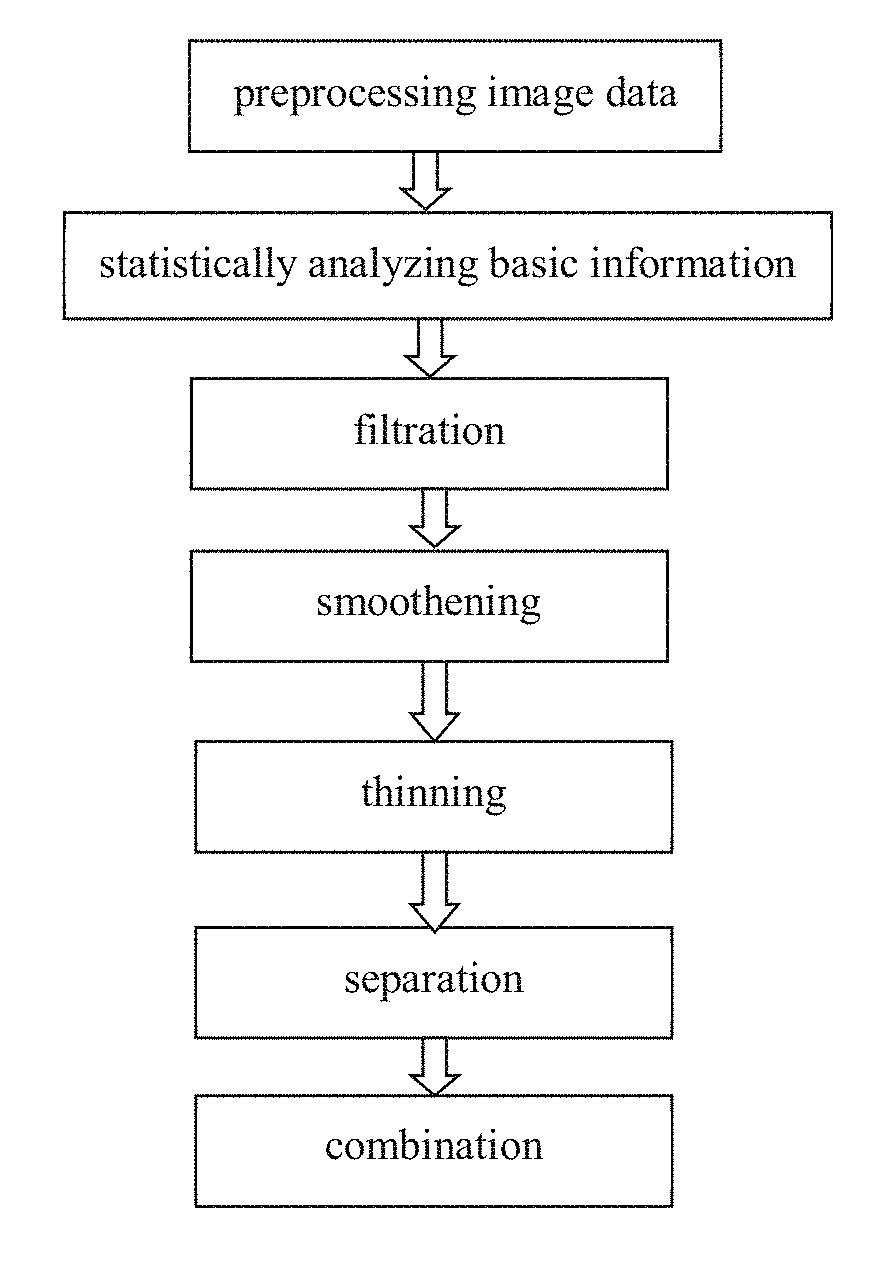Method of separating, identifying and characterizing cracks in 3D space
a three-dimensional space and crack technology, applied in the field of crack identification, can solve the problems of affecting the subsequently material strength, the observation cannot extract the two-dimensional (2d) characteristics of cracks on the observed surface, and encounters very technical difficulties
- Summary
- Abstract
- Description
- Claims
- Application Information
AI Technical Summary
Benefits of technology
Problems solved by technology
Method used
Image
Examples
Embodiment Construction
[0064]The present invention is further described below in combination with the accompanied drawings, but implementations of the present invention are not limited hereto.
[0065]Micro-CT images are commonly asked for routine preprocessing, including smoothening, denoising, edge cutting, image segmentation (identification of crack or pore). Thus the actual work requires 7 steps, and there are 6 main steps after the image segmentation, as shown in FIG. 3, that is:
[0066]0) preprocessing digital image
[0067]1) statistically analyzing basic information: basic information of the digital image, such as porosity, connectivity, structure anisotropy, etc.
[0068]2) filtration: removing non-crack structure in the data, such as very small structures or structures with strong isotropic
[0069]3) smoothening: smoothening and mending the digital image
[0070]4) thinning: thinning the void structure into a certain thickness in a most narrow direction in three-dimensions
[0071]5) separation: separating interse...
PUM
| Property | Measurement | Unit |
|---|---|---|
| porosity | aaaaa | aaaaa |
| size | aaaaa | aaaaa |
| thickness | aaaaa | aaaaa |
Abstract
Description
Claims
Application Information
 Login to View More
Login to View More - R&D
- Intellectual Property
- Life Sciences
- Materials
- Tech Scout
- Unparalleled Data Quality
- Higher Quality Content
- 60% Fewer Hallucinations
Browse by: Latest US Patents, China's latest patents, Technical Efficacy Thesaurus, Application Domain, Technology Topic, Popular Technical Reports.
© 2025 PatSnap. All rights reserved.Legal|Privacy policy|Modern Slavery Act Transparency Statement|Sitemap|About US| Contact US: help@patsnap.com



